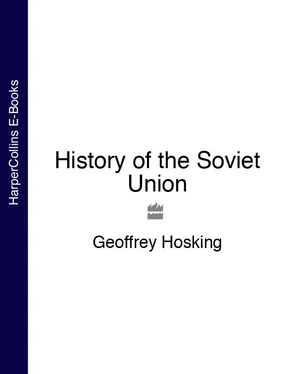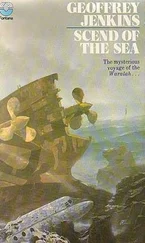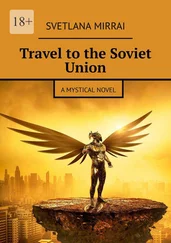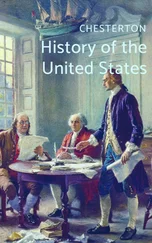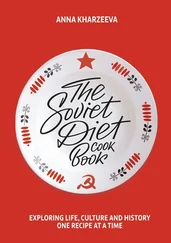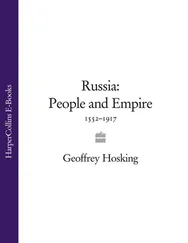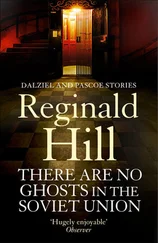The Tambov movement was a peasant rising in the classical sense, with no direct influence or support from any political party. The Socialist Revolutionary Party, who would have been their natural sponsors, were reticent in their support for the insurrection, perhaps because their civil war experience suggested to them that fighting meant sub-ordination to generals, and they wanted no more of that. It is true that the leader of the rising, Antonov, had once been a Left Socialist Revolutionary, and that there were Socialist Revolutionary features in the programme issued by the Union of the Toiling Peasantry, which was the civilian branch of the movement: reconvening the Constituent Assembly, renewed guarantees of civil liberties, full socialization of the land, and restoration of the mixed economy. But the latter two were natural peasant demands anyway.
At first Antonov’s men consisted of odd bands of deserters from the Red Army, dispossessed peasants and other people ‘on the run’ for a variety of reasons. It was not until the final defeat of Denikin that Antonov extended his forces any further. Then began a campaign of murdering Bolshevik and soviet officials, raiding village soviets and court rooms (burning documents, like the French peasants of 1789), railway stations, and grain collection points.
Full-scale insurrection came only in August-September 1920, with the appearance of the requisition teams to claim their share of the harvest, which that year was a poor one. Battles broke out between grain teams and villagers, to whose aid Antonov came. At first he was very successful: thousands of peasants flocked into the Green Army (as it became known), and, since Bolshevik morale and strength in Tambov was low, they were able to liberate whole rural districts and establish a civilian administration. The Green Army was in some ways remarkably like the Red Army in structure, complete with political commissars, though naturally with few trained officers: even the Reds’ opponents found themselves imitating Red methods. At its height the Green Army numbered up to 20,000 men, with a good many more fighting as irregulars. It cut no fewer than three main railway lines on which the Bolshevik government depended for communications with the Volga and North Caucasus. By December 1920 Lenin was so alarmed by the situation that he created a Special Commission for Struggle with Banditry, initially under Dzerzhinsky. Surviving local Bolsheviks and Cheka officials were pulled out of Tambov province, and special troops sent in under the command of Antonov-Ovseyenko (formerly of the Petrograd MRC) and later Tukhachevsky (fresh from suppressing the Kronstadt rising–see below, pages 90–1). These troops took control of villages one by one, shooting whole batches of peasants suspected of having fought with Antonov’s army. Some villages they actually burned down. At the same time they flushed the Green forces out of the relatively sparse woodland into the open fields, where armoured units with machine-guns could function more effectively against them.
Repression was, however, combined with concessions. Grain requisitioning was abolished in Tambov on Lenin’s specific order, and scarce supplies were brought in from elsewhere. In effect, the New Economic Policy (see below, page 119) was given a preliminary trial in Tambov, and seemed to work well, when combined with ruthless repression, in reducing the peasant will to fight.
It remains to be explained, however, why this and other peasant risings failed. After all, their aims were shared by most peasant communities, especially in the grain-producing regions, and even in some measure by urban workers. Yet there was never any consistent link, either between individual peasant movements, or with the workers. The peasants remained too localized and rural in their consciousness. The Green Army did once mount an attack on the town of Tambov, but seems to have been repulsed relatively easily by Red Guards. Above all, there was a lack of political coordination, such as might have been supplied by the Socialist Revolutionaries, had they not been already organizationally weakened and reluctant to take up arms; and in any case the peasants were by now distrustful of all political parties and of all help from urban intellectuals.
In some ways, given the anti-rural prejudices of most Marxists, it was not surprising that relations between the Bolsheviks and the peasants should have deteriorated so sharply. Matters were not much better, however, among the workers, who should have been the new government’s natural allies. We have already seen that by the summer of 1918 the Bolsheviks had nationalized most of industry and subordinated the factory committees to the trade unions, centralizing ‘workers’ control’ to a point where it no longer came from the workers. This certainly contributed to the revolution’s loss of its ideals, but nevertheless such centralization was often accepted by the workforce as an alternative to the even graver threat of hunger. The fact was that the peace policies of the Bolsheviks, popular though they undoubtedly were, created a great deal of unemployment. It has been estimated that as many as 70 per cent of Russia’s factories were working in some way for the war effort–and these tended to be the larger enterprises, employing large numbers of workers. State defence contracts ended abruptly with the ceasefire of December 1917, and in Petrograd some 60 per cent of the workforce was laid off between January and April 1918. The factories which survived very often went over to one-man management, since Lenin was now very keen on clear lines of authority, and began to pay piecework wages. Since the managers who took over were sometimes the old capitalist ones, now working under state supervision, factory discipline became once again reminiscent of pre-revolutionary days.
At the same time, food prices rose: in Moscow the price of potatoes doubled between January and April 1918, while rye flour (the main ingredient of the staple Russian loaf) quadrupled. In Petrograd rations fell to 900 calories a day, as against 2300 considered necessary for non -manual labour. Productivity declined as workers became malnourished and exhausted. To supplement their rations, many pilfered, resorted to the black market, went out to the villages to barter, or even to resettle there permanently, if they still had relatives or communal rights. Many workers of course joined the Red Army. The great depopulation of the major cities began. Between mid-1917 and late 1920 the number of factory workers declined from around 3½ million to barely over a million. Those who stayed behind either sought a career in the new party and state institutions (which gave preference to entrants from the proletariat), or they remained cold, hungry, insecure and powerless.
The demonstrations over the Constituent Assembly offered the first opportunity for the workers to express their new discontents. The shooting of unarmed workers by the Red Guards was widely denounced, while workers in a number of factories condemned Sovnarkom, demanded the disarming of the Red Guards (in some resolutions compared to the tsarist gendarmerie) and called for new elections to the soviets. On 9 January (which happened to be the anniversary of Bloody Sunday in 1905) a huge procession accompanied the funeral of those killed.
The non-Bolshevik political parties were too restrained and disorganized to offer effective articulation to the movement. All the same, some dissident Mensheviks managed to organize in Petrograd a so-called Extraordinary Assembly of Delegates from Works and Factories, which met in March 1918. It is not clear how the assembly was elected, but it did contain a number of working-class activists of 1917, especially from among the Mensheviks and Socialist Revolutionaries. Their speeches gave abundant evidence of renewed discontent among the workers: at hunger, unemployment, the closure and evacuation of factories–the capital had just been moved to Moscow–at arbitrary arrests by the Cheka, and the muzzling of the soviets. Above all, the workers felt powerless: they no longer had any institutions speaking for them. The factory committees were turning into obedient organs of government, the trade unions were no longer in a position to protect their interests, the soviets would no longer permit them to recall delegates of whom they disapproved in order to choose new ones. ‘Wherever you turn’, complained one worker delegate, ‘you come across armed people who look like bourgeois and treat the workers like dirt. Who they are we don’t know.’ In general, they felt that they had been promised bread and peace, but given food shortages and civil war; they had been promised freedom and given something nearer to slavery. The assembly called for the resignation of Sovnarkom, the repudiation of the Brest-Litovsk Treaty and the reconvocation of the Constituent Assembly.
Читать дальше
